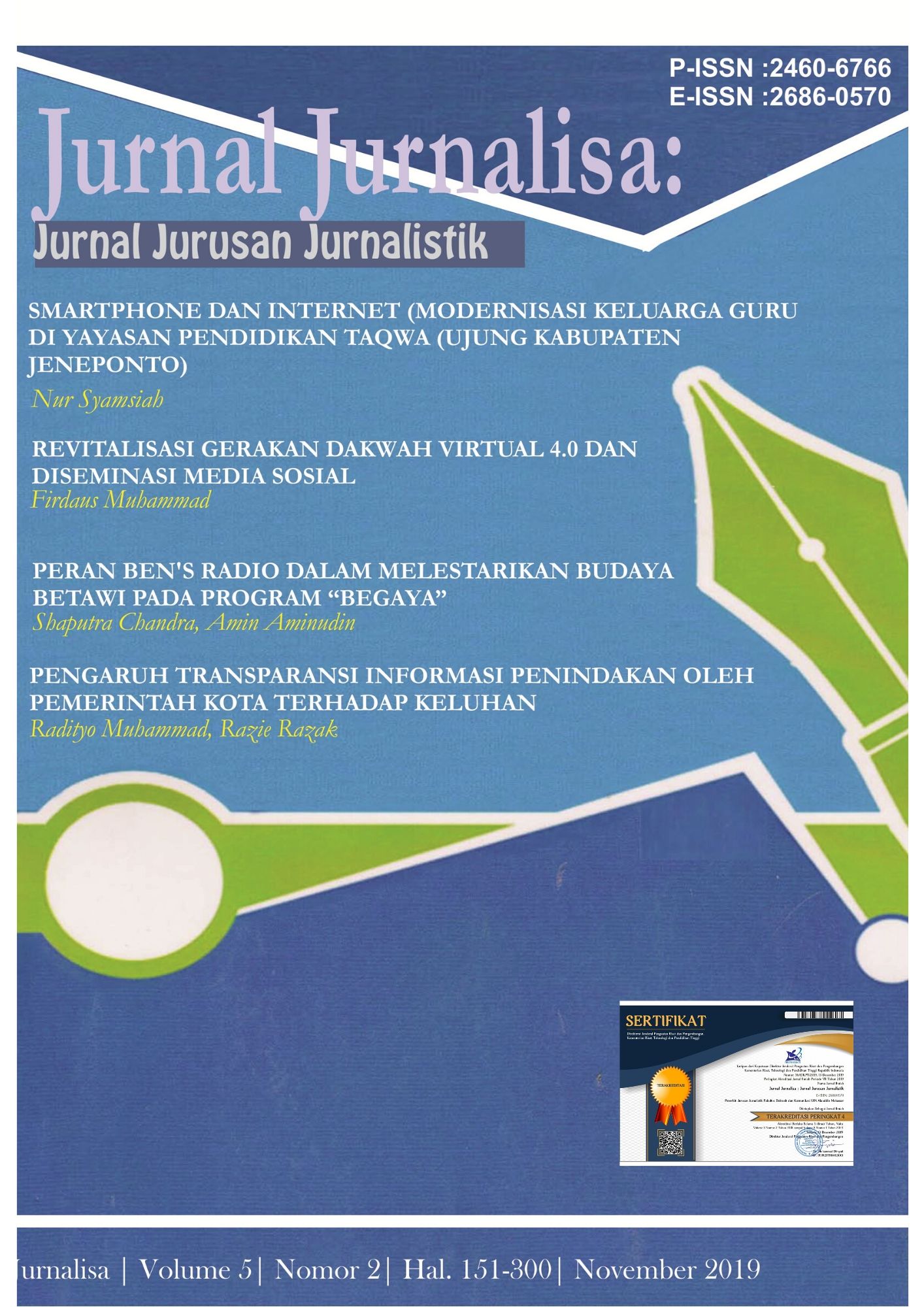KONSTRUKSI MAKNA KETIDAKADILAN BERBASIS GENDER MENURUT SUDUT PANDANG AKTIVIS WOMEN’S MARCH BANDUNG
Abstract
Gender inequality is a phenomenon that occurs in society without being denied. Women 's March activists who are also gender activists that oppose gender inequality with all their efforts have a lot of experience in fighting gender inequality and various motives in facing it all. The existence of individual experience in dealing with reality influences the individual's view of seeing the social world. Like their perspective in constructing the meaning of inequality. Therefore this research aims to find out how is the construction of the meaning of gender inequality base on the perspective of Women’s March Bandung activists. This research took five informants who became activists on gender issues such as activists from Women’s March Bandung. This research is qualitative research, a phenomenological approach and using the theory of phenomenology Alfred Schutz. With data collection techniques such as in-depth interviews, observation, literature study. And triangulators as validation and validity of data. The results of the research showed that the construction of the meaning of gender inequality gave results that showed an interactive based results between inequality and gender itself in this research with more than one factor. Namely, the concept of gender and patriarchy is the cause of the occurrence of gender injustice with all of its aspects. Then how is feminism as an ideology and movement against the cases of gender inequality? Motives and experiences become factors that influence informants in constructing the meaning of gender inequality. Motives here are divided into because of motive, and in order to motive, which influences them in taking action. Motives also influence their actions to produce various experiences, such as experience before declaring themselves as an activist of gender issues and their experience when they became activists of gender issues. The conclusion of this research showed that there is also an interactive relationship between each concept and model.
Downloads
References
Ardianto, E. d.-A. (2007). Filsafat dan Ilmu Komunikasi. Bandung: Simbiosa Rekaman Media.
Bungin, B. (2008). Penelitian Kualitatif: Komunikasi, Ekonomi, Kebijakan Publik, dan Ilmu Sosial Lainnya. Jakarta: Kencana.
Creswell, J. W. (1998). Qualitative inquiry and Research Design Choosing Five Traditional. California: SAGE publications.
Denzin, N. K. (2009). Pemikiran Konstruktivitas Sehari-hari. In Y. S. Norman K Denzin, Handbook of qualitative research (p. 157). Yogyakarta: Pustaka Pelajar.
Dzuhayatin, & Fakih, M. (2000). Membincang Feminisme: Diskursus Gender Prespektif Islam. Surabaya: Risalah Gusti.
Fakih, Mansour. (2008). Analisis Gender dan Tranformasi Sosial. Yogyakarta: Pustaka Pelajar.
Kuswarno, E. (2009). Metodologi Penelitian Komunikasi, Fenomenologi, Konsep, Pedoman, dan Contoh Penelitian. . Bandung: Wisya Padjadjaran.
Lorber, J. (2010). Gender Inequality. In J. Lorber, Feminism and Their Contribution to Gender Equality (p. 4). Oxford: Oxford Press University.
Moleong, L. J. (2007). Metodologi Kualitatif. Penelitian Kualitatif. Bandung: Remaja Rosdakarya.
Rigdeway, C. L. (2011). Framed by gender: How gender inequality persists in the modern world. New York: Oxford University Press.
Risnawati, M. N. (2012). Teori-teori Psikologi. Yogyakarta: Ar-Ruzz Media.
Rokhmansyah, A. (2016). Pengantar gender dan feminisme: Pemahaman awal kritik sastra feminisme. Garudhawaca.
Sobur, A. (2006). Semiotika Komunikasi. Bandung: Remaja Rosdakarya.
Sugiyono. (2008). Metode Penelitian Kuantitatif Kualitatif dan R&D. Bandung: Alfabeta.
Syah, M. (2003). Psikologi Belajar. Jakarta: PT, Raja Grafindo Persada.
Sylvia, W. (1990). Theorizing Patriarchy. Cambridge: Basil Blackwell.
Jurnal :
Alimi, M. Y. (2013). JUDITH BUTLER Gender dan Seks sebagai Pertunjukan. Manusia, Perempuan, Laki-Laki. Jakarta: Komunitas Salihara.
Ida, R. (2001). The construction of gender identity in Indonesia: Between cultural norms, economic implications, and state formation. Surabaya: Jurnal Masyarakat, Kebudayaan, dan Politik, 26.
Kachel, S. (2016). Traditional Masculinity and Femininity: Validation of a New Scale Assessing Gender Roles. Frontiers, https://www.frontiersin.org/articles/10.3389/fpsyg.2016.00956/full.
Sen, A. (2001). The Gendered Body. In A. Sen, The Many Faces of Gender Inequality (pp. 466-477). New Republic.
Wardani, A. N. (2018). Hegemoni Maskulinitas dalam Under The Greenwood Tree Karya Thomas Hardy . ResearchGate.
Once an article was published in the journal, the author(s) are:
granted to the journal right licensed under Creative Commons License Attribution that allows others to share the work with an acknowledgment of the work's authorship. permitted to publish their work online in third parties as it can lead to wider dissemination of the work. continue to be the copyright owner and allow the journal to publish the article with the CC BY license receiving a DOI (Digital Object Identifier) of the work.

